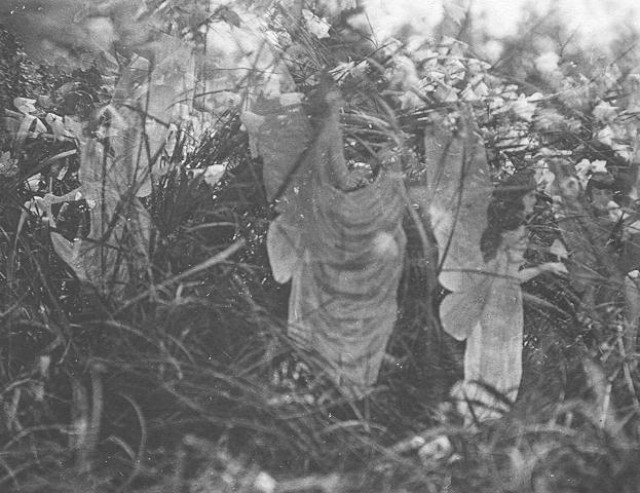In 1917 two young cousins from Cottingley, England, borrowed a camera and set off into the countryside. On return, Elsie Wright, 16, and Frances Griffiths, 10, claimed to have taken pictures of real life fairies. When Elise’s father saw the images he argued they were fake and ordered her to stop using the camera. Elise’s mother was less convinced and decided to publish the photos.
The images soon came to the attention of Sir Arthur Conan Doyle, the author of Sherlock Homes. Doyle was confident that the images were real and proof that fairies existed. He was so convinced that he wrote an article for The Strand stating so. Whilst reactions to his article were mixed, Conan Doyle’s enthusiasm caught the public’s imagination and the story has since been immortalized. To this day the tale of the Cottingley fairies is told to British children.


 The twist in the story came when, in 1978, researcher James Randi noticed that the fairies were identical to drawings in the popular children’s book Princess Mary’s Gift Book. At this point the cousins—both now in their seventies—were confronted about the photographs and forced to admit the images were bogus. It was a hoax all along; the girls had faked the pictures using cardboard cutouts and hatpins!
The twist in the story came when, in 1978, researcher James Randi noticed that the fairies were identical to drawings in the popular children’s book Princess Mary’s Gift Book. At this point the cousins—both now in their seventies—were confronted about the photographs and forced to admit the images were bogus. It was a hoax all along; the girls had faked the pictures using cardboard cutouts and hatpins!
 Despite their confession Frances still retains that the fifth and final image – shown above—is genuine!
Despite their confession Frances still retains that the fifth and final image – shown above—is genuine!
The photographs and two of the cameras used are on display in the National Media Museum in Bradford, England.